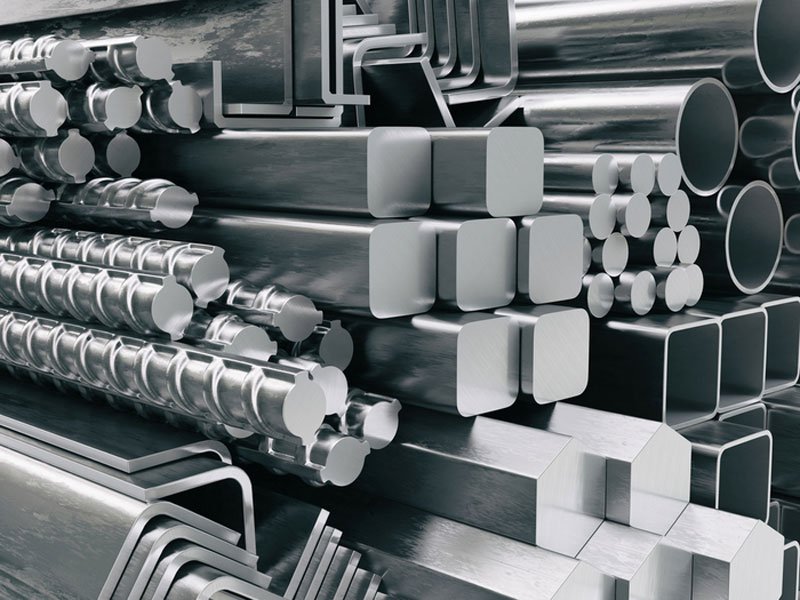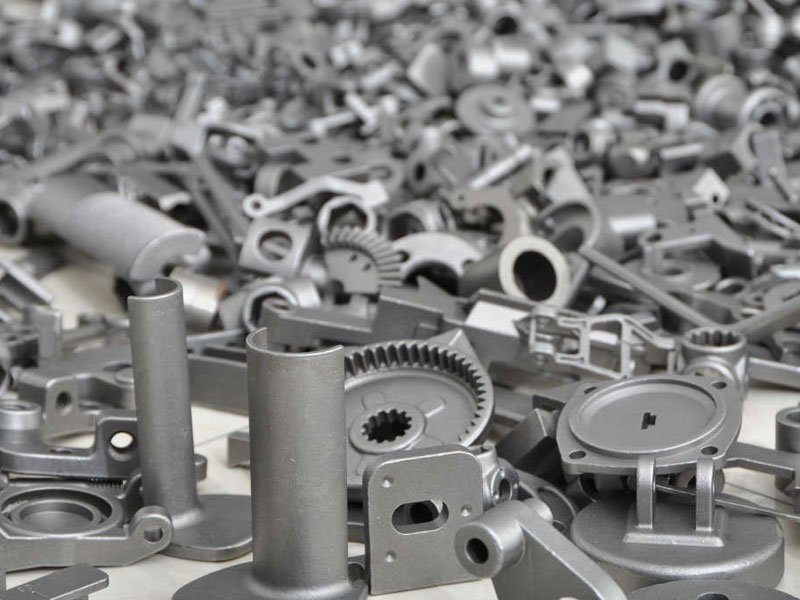Steel is a key alloy material used in a variety of industries, including construction and military, due to its high strength, ease of fabrication, customizability, and durability. Alloy steel and stainless steel are the highest quality types of steel, and manufacturers often compare the two when they need steel.
Understanding the properties of alloy steel and stainless steel will help you make an informed choice. By comparing their different properties, you will have a clearer understanding of the advantages of each.
In this guide, we’ll explore the differences between alloy steel and stainless steel and analyze their types and applications. Let’s get started!
1. Alloy Steel Overview
Ⅰ. Alloy Steel Overview
Alloy steel is a type of steel made by adding one or more alloying elements to an iron-carbon base. These alloying elements can include nickel, chromium, molybdenum, vanadium, manganese, etc., which are added to steel to modify its physical and mechanical properties, such as strength, hardness, toughness, wear resistance and corrosion resistance.

Ⅱ. Classification of alloy steels:
The classification of alloy steels is mainly based on the content of alloying elements and the use of the steel.
According to the content of alloying elements, alloy steels can be categorized into:
- Low-alloy steel: total alloying elements not exceeding 5%.
- Medium-alloyed steels: Total content of alloying elements between 5% and 10%.
- High-alloy steel: total content of alloying elements is more than 10%.
Based on their use, alloy steels can be categorized into:
- Alloy structural steel: such as low-alloy high-strength structural steel, carburized steel, tempered steel, spring steel and rolling bearing steel.
- Alloy tool steel: e.g. sharpening steel, mold steel, steel for gauges, etc.
- Special performance steels: such as stainless steel, heat-resistant steel, wear-resistant steel, etc.
Typical alloy steel grades include:
- Low-alloy high-strength structural steel: e.g. Q345 (16Mn), commonly used in large steel structures.
- Carburized steel: e.g. 20CrMnTi, for wear parts with medium loads.
- Tempered steel: e.g. 40Cr, used to make mechanical parts.
- Rolling bearing steel: such as GCr15, suitable for manufacturing rolling bearings.
- Die steel: such as Cr12, commonly used in cold punching die and cold extrusion die.
- Stainless steel: e.g. 304 stainless steel for corrosion resistant environments.
- Heat-resistant steel: e.g. 4340 for high-temperature environments.
The selection of these classifications and steel grades depends on the specific performance requirements of the desired material, such as strength, wear resistance and corrosion resistance.


Ⅲ:Alloy steel grades:
The general naming principle of alloy gold sign: the carbon content of alloy steel, the various types of alloying elements, the content of alloying elements should be reflected in the sign.
Example: Alloy spring steel 60Si2Mn, meaning carbon content ~0.6%; silicon content ~2%; manganese content Mn ~1%.
Ⅳ:Areas of application for alloy steels:
Because alloy steel is corrosion-, wear- and temperature-resistant, it is versatile enough to be used in the manufacture of bearings, construction, ships and automotive parts. It can be found in everything from construction to automobile manufacturing to aerospace and heavy machinery.
2. Stainless Steel Overview
Ⅰ:What is stainless steel?
Stainless steel is a special type of alloy steel that is primarily used to increase the corrosion resistance of steel by adding at least 10.5% chromium. Chromium reacts with oxygen in the steel to form a protective chromium oxide film that prevents the steel from rusting or corroding. Stainless steels also often contain nickel and molybdenum, which further increases their corrosion resistance and strength.

Ⅱ:Common types of stainless steel:
- Martensitic stainless steel: This stainless steel can be heat-treated to adjust the mechanical properties and is a hardenable steel, typically represented by the Cr13 type. Commonly used for steam turbine blades, cutlery and surgical instruments.
- Ferritic Stainless Steel: Contains between 15% and 30% chromium, has a body-centered cubic crystal structure, and is usually nickel-free. It has good thermal conductivity, small expansion coefficient, good oxidation resistance and stress corrosion resistance, and is commonly used for parts resistant to corrosion by atmosphere, water vapor, water and oxidizing acids.
- Duplex stainless steel: Composed of approximately 50% ferrite and 50% austenite, the minimum ferrite content should also be 30%. This steel combines the advantages of both structures.
- Austenitic stainless steel: austenitic organization at room temperature, non-magnetic, and high toughness and plasticity, but relatively low strength. It can not be strengthened by phase transformation, but can be strengthened by cold working.
- Precipitation Hardening Stainless Steel: By adding strengthening elements to stainless steel and precipitation hardening treatment, carbides, nitrides, etc. are precipitated to increase strength while maintaining toughness. Abbreviation PH steel.
Each of these types of stainless steel has unique properties and is suitable for different application scenarios.
Ⅲ. International Stainless Steel Numbering Rules:
- Use international symbols for chemical elements and national symbols to indicate chemical composition, and use Arabic letters to indicate the content of composition: e.g. China, Russia 12CrNi3A.
- Fixed digit numbers to indicate the steel series or numbers; for example: the United States, Japan, 300 series, 400 series, 200 series.
- The serial number is composed of Latin letters and order, indicating the use only.
Ⅳ. Areas of application for stainless steel:
Stainless steel is widely used in the following fields due to its excellent corrosion resistance, high temperature stability, high hardness, and good aesthetics: architectural decoration, chemical industry, medical devices, aerospace, energy and environmental protection, food industry, and electronic products.
3. Common alloying elements and their roles
- Chromium (Cr): Enhances corrosion resistance, hardness and strength.
- Nickel (Ni): Increases toughness and improves ductility and corrosion resistance of steel.
- Molybdenum (Mo): Increases the strength and hardness of steel, especially at high temperatures, while improving corrosion resistance.
- Manganese (Mn): Improves the strength and hardness of steel, increases wear resistance, and helps remove oxygen and sulfur.
- Vanadium (V): Increases strength, improves toughness and wear resistance while refining the grain structure of the steel.
4. Difference between alloy steel and stainless steel
Although both alloy steels and stainless steels are steels whose properties are improved by the addition of alloying elements, their main difference lies in the type and purpose of the alloying elements. While alloy steels can include a variety of elements to improve different mechanical properties, the primary purpose of stainless steels is to improve corrosion resistance, which is usually accomplished by increasing the chromium content. Stainless steels also usually include nickel to further improve their resistance to oxidation and corrosion.


5. Comparison of alloy steels other than stainless steel
In addition to stainless steel, other types of alloy steels include:
- Tool Steel: Contains a high proportion of carbon and other elements such as vanadium and tungsten, suitable for making tools and cutlery, and is known for its high hardness and wear resistance.
- Low Alloy High Strength Steel (HSLA): Typically contains small amounts of niobium, titanium, and vanadium, which provide high strength and good weldability and are commonly used in construction and bridges.
- Heat-resistant steel: Elements such as molybdenum and vanadium are added to maintain strength and hardness at high temperatures and are widely used in boiler and turbine manufacturing.
6. Comparison of stainless steel with other similar materials
Stainless steel is heavier but excels in corrosion resistance and strength when compared to similar materials such as aluminum and titanium. Aluminum is lightweight and corrosion resistant, but not as good as stainless steel in high strength applications.
Titanium, on the other hand, offers a better balance of weight and strength and is extremely corrosion-resistant, but is more expensive and therefore used primarily in aerospace and medical devices.
7. What factors need to be considered when determining the ideal steel for a machining program?
There are several key factors to consider when selecting the ideal steel for machining:
- Mechanical Properties: Properties such as strength, hardness, toughness, etc. must meet the needs of the particular application.
- Corrosion resistance: Corrosion resistance is critical if the product is to be exposed to a corrosive environment.
- Machinability: Steel should be easily machinable, including cutting, welding and forming.
- Cost: A balance needs to be found between performance and cost to achieve project economics.
- Environmental conditions: Environmental factors such as temperature, humidity and chemical exposure can also influence material selection.
8. Conclusion
Alloy steels and stainless steels both play an important role in modern industry.
Understanding the differences between them and how to select the right steel is essential for machining and manufacturing. When selecting steel, the mechanical properties, corrosion resistance, machinability and cost of the material must be taken into account, based on the specific requirements of the project and the environment in which it will be used, to ensure the quality and durability of the end product.
However, if you need the help of professionals determining the suitable material between alloy steel and stainless steel, contact Allied Metal. We provide extensive manufacturing capabilities and value-added services for your prototyping and manufacturing needs. Our team of expert engineers has in-depth knowledge and experience in investment casting and machined, and other manufacturing solutions you seek. Contact us today; let’s discuss the details of your next project.